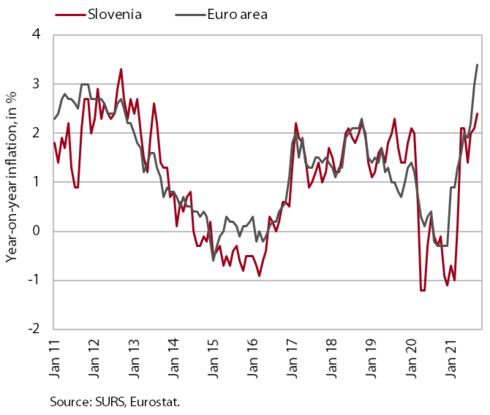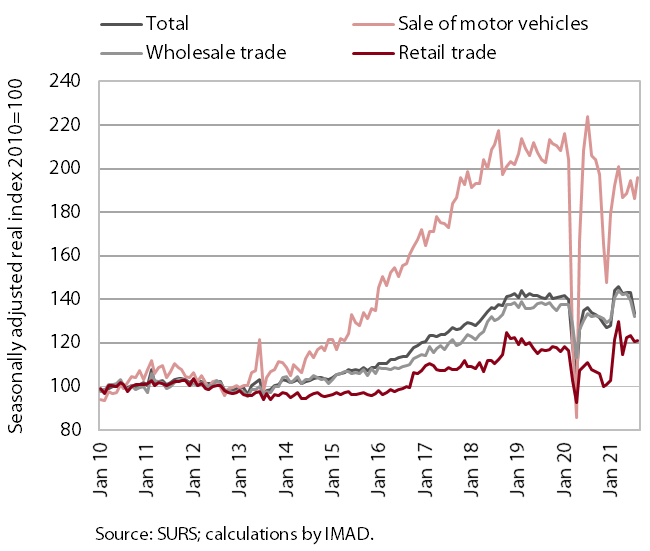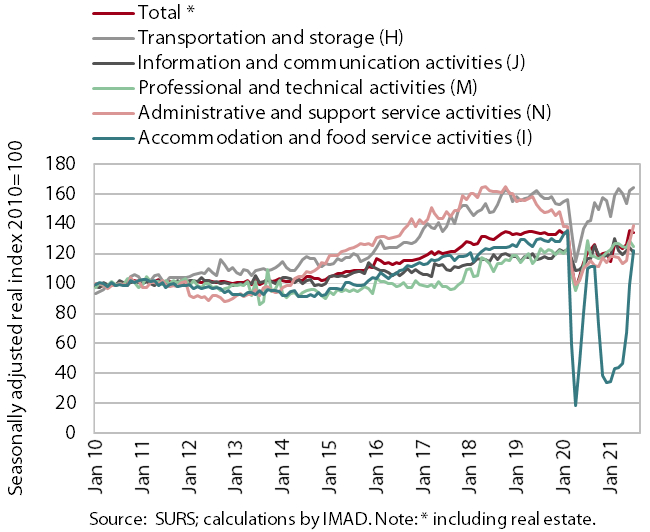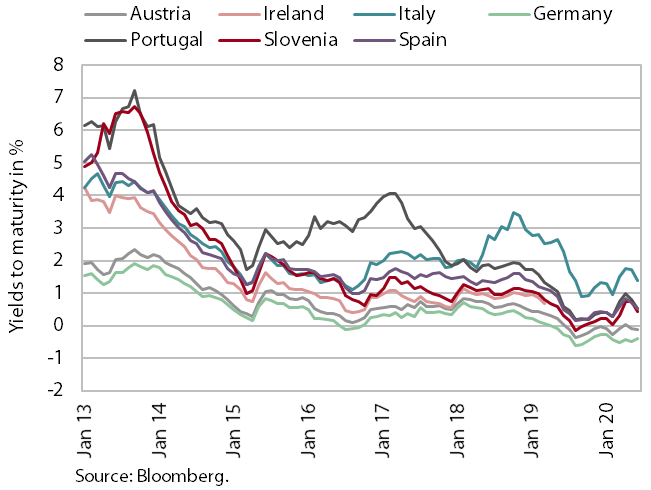Charts of the Week
Current economic trends from 27 September to 1 October 2021: consumer prices, trade, market services and bond
Year-on-year consumer price inflation edged up slightly to 2.4% in September. Inflation continues to be fuelled mainly by higher prices of petroleum products. Prices of durable goods and services are also gradually rising. Turnover in trade fell sharply in July in all three main segments, but preliminary data for August do not suggest that the negative trends will continue. Market services also saw less favourable trends in midsummer, with only tourism-related services continuing to show noticeable growth.
Consumer prices, September 2021

Given the sharp rise in commodity prices and stronger price growth in tourism-related services, year-on-year consumer price inflation has gradually strengthened in recent months, reaching 2.4% in September. Half of the increase was due to higher prices of petroleum products, which rose by almost 30% year-on-year. In the face of rising commodity prices and supply chain bottlenecks, year-on-year growth in durable goods prices has continued to strengthen gradually, and at 2.9% was the highest in the past decade. Due to different seasonal developments in the clothing and footwear group, the prices of semi-durable goods fluctuated and were 0.6% lower year-on-year, after rising in the previous five months. Growth in services prices (1.2% year-on-year) continues to strengthen. This is also the result of higher year-on-year price growth in the restaurants and hotels group (5.2%), which we believe is also due to increased demand as a result of voucher redemption and high growth in overnight stays by foreign tourists. Food prices are still lagging behind the previous year's level, but the gap is narrowing from month to month.
Trade, July 2021

Turnover in trade fell sharply in July in all three main segments; preliminary data show it rose in August. Turnover in wholesale trade fell the most; it fell for the fourth month in a row after rising sharply in the first quarter. Turnover was also down in the sale of motor vehicles. Nearly a third fewer new passenger cars were sold this July than in July 2020. Turnover in retail trade was also down due to lower sales of non-food products. Still, this is the only one of the three main segments that remains higher than a year ago and compared to July 2019. According to preliminary data, turnover in retail trade and in the sale of motor vehicles increased in August.
Market services, July 2021

Real turnover in market services fell slightly in July, while growth continued, especially in tourism-related services. With a sharp increase in overnight stays by foreign tourists and a high number of overnight stays by domestic tourists boosted by the redemption of last year's and this year's vouchers, the highest increase in turnover was recorded in accommodation and food service activities (by almost a quarter). In other business activities, turnover rose by just under a tenth, with strong growth in travel agencies, while moderate growth continued in transportation, with storage activity making the largest contribution. Professional and technical activities saw a decline in turnover, driven by a fall in architectural services and information and communication services, particularly computer services. Compared to the same period in 2019, turnover was significantly lower in only a few activities, namely travel agency activities, employment activities and motion picture, video and television programme production, sound recording and music publishing activities.
Bond, Q3 2021

The situation on euro area bond markets remained favourable in the third quarter. At the end of the period, the ECB opted to slow down the pace of its bond purchases under the PEPP programme. This, together with investors' expectations of higher inflation, led to an increase in the yield to maturity, which by the end of September had reached roughly the same level as in the months before the outbreak of the epidemic. The yield to maturity of the Slovenian bond was thus -0.02% in the third quarter. The spread to the German bond was 35 basis points, roughly the same as in the previous quarter.
